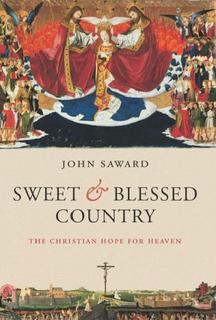The Return of the Queen (of Sciences)
 Theology is not apologetics and apologetics does not consist in violently yoking the truths of the Catholic Faith to whatever half-baked poisonous pseudo-philosophy the prince of this world has just concocted to procure the damnation of our contemporaries. The point is illustrated by the fact that such apologetics and such pseudo-theology, through whose hour of darkness we have been living for the last several decades, have emptied the house of God with more thoroughness than many an overt persecution. A side effect of this is that those great theological minds who remain faithful to the truths of the Faith but also remain within the polluted precincts of academic theology are compelled, merely to gain a hearing, to enter into debate with positions which are utterly incapable of reconciliation to the truth. This manoeuvre, a veritable descent into hell, requires the provisional consideration of ideas which in themselves are wholly unworthy of any consideration whatsoever. This means that the true theologian who would enter into argument with his pseudonymous colleagues is compelled like Socrates always to take the reductio ad absurdam (more or less tactfully expressed) as the overall form of his argument.
Theology is not apologetics and apologetics does not consist in violently yoking the truths of the Catholic Faith to whatever half-baked poisonous pseudo-philosophy the prince of this world has just concocted to procure the damnation of our contemporaries. The point is illustrated by the fact that such apologetics and such pseudo-theology, through whose hour of darkness we have been living for the last several decades, have emptied the house of God with more thoroughness than many an overt persecution. A side effect of this is that those great theological minds who remain faithful to the truths of the Faith but also remain within the polluted precincts of academic theology are compelled, merely to gain a hearing, to enter into debate with positions which are utterly incapable of reconciliation to the truth. This manoeuvre, a veritable descent into hell, requires the provisional consideration of ideas which in themselves are wholly unworthy of any consideration whatsoever. This means that the true theologian who would enter into argument with his pseudonymous colleagues is compelled like Socrates always to take the reductio ad absurdam (more or less tactfully expressed) as the overall form of his argument.John Saward has chosen a different path. Mindful that, compelled to live in the real world, the man in the street is a great deal closer to reality and so to Thomism than academic philosophers or theologians, Saward addresses his reflections to everyman. While academics do indeed have souls, so does the man in the street, and the latter is far more numerous than the former. But in ignoring them, Saward does academic theologians a great service, for, like the enemies of Socrates, what they need to learn more than anything else if they are to have any hope is that they know nothing. For theology is science derived from revealed principles, by far the most important of which are wholly beyond the ken of natural reason. As Isaiah says "if you do not believe then you will not understand". The world of academic theology is pervaded by the spirit of unbelief: its inhabitants are wedded to ideas intrinsically incompatible with the virtue of faith, and so in theological terms they literally know nothing.
Saward practices theology, which is a science; and he treats it as such. He calls to his service and the service of his theme those who do know of what they speak (even if when they spoke it they knew only in a glass darkly) in order to speak of the state of those who see face to face. He does his theology not with the Teutonic hoards of the pseudo-theologians but with those who have actually 'suffered divine things': the saints. St Thomas, St Bede, Bl. Dennis, Bl. Marmion are his guides and his partners in conversation and in contemplation of the mystery expressed in the image which adorns the cover of this book: the entering of human nature and of human persons into the glory of the Beatific Vision.
By choosing this theme he strikes into the heart of the darkness of the post-conciliar horror. For it is errors about the beatific vision, of Christ's possession of it, and the manner in which we are ordered to it, that have wreaked the devastation of which the visionaries of Fatima spoke among the earthly suburbs of the one everlasting city. What better way to commence their renewal than by turning to the contemplation of their heavenly archetype the Heavenly Jerusalem, our Mother, and its archetype the Ever Blessed Virgin 'who has destroyed all heresies throughout the world'?

<< Home